Solderless assembly of electronic components can deliver significant benefits in terms of simplicity, repeatability and some key electrical and mechanical considerations. However, to be acceptable, technologies such as Press-Fit need to satisfy stringent operational and performance requirements stipulated for the specific application and by standards bodies such as IEC.
MARYANN FULTON, KEMET
The need for solderless connectivity
While most electronic assemblies are soldered via infrared reflow, some components – especially connectors, remain unsuited to this methodology and require alternative processes to attach them to the PCB. Often, this will involve adding a step to the manufacturing process – either wave soldering or hand soldering that adds complexity and cost as well as another heat cycle that can pose a risk of degradation of the components already installed on the PCB.
One way to avoid the costs and complexity of an additional soldering process is to use a solderless approach. Indeed, this is not new, and a ‘blade-and-socket’ method has been available for over 50 years. In this method, a solid blade is attached to the component during its manufacture and a corresponding female socket is fitted into the PCB during the reflow process. Once the board is assembled, then the component is simply inserted into the connectors to form a mechanical and electrical connection.
While this approach is straightforward, there are certain drawbacks. As blade-and-socket connections are designed to be mated and unmated several times, the insertion forces are relatively low. This leads to the potential for the joint introducing electrical resistance and inductance, either of which can have a material impact on modern, high impedance, high-speed circuitry. In some cases, precious metals are required to ensure a good joint as well as to eliminate effects such as ‘fretting’ that can degrade connections over time as a result of prolonged exposure to vibration.
Press-Fit delivers a better solderless connection
To overcome the drawbacks of traditional blade-and-socket connections, Press-Fit technology was developed. In this approach, the component is fitted with a compliant pin that is pressed into a rigid plated-through-hole (PTH) directly on the PCB – essentially, the role of the blade and socket is reversed and the male blade exerts a mechanical force on the female PCB hole.
Press-Fit can be optimized to provide a better-quality connection than blade-and-socket, practically eliminating the resistance and inductance that can impact circuit operation and reliability. In common with blade-and-socket, it does reduce additional labor as well as eliminating the potentially damaging extra heat cycle. Also, Press-Fit devices can be extracted and re-fitted several times, allowing simplifies and risk-free rework or repairs should they be required.
Furthermore, as Press-Fit does not require solder to fit a socket to the PCB, issues such as cold spots, solder splatter, voids and cracks are also eliminated, giving a highly reliable and repeatable joint. As the component is directly inserted into the PCB, the need for precious metals is removed and there is no risk of the ‘fretting’ that is associated with two-part connectors. Material costs are also reduced through the elimination of the socket.
Designing Press-Fit terminals – the challenge
As Press-Fit components rely upon the interplay between tolerances to assure a strong, reliable fit with a good electrical connection, it should come as no surprise that the most significant challenge for designers of Press-Fit technology is achieving the right balance between the tolerances. The issue arises due to the differences in the manufacturing processes for the PCB and the metal Press-Fit pins; the required tolerances are tight for a PCB but relatively loose for a metal blade.
The tolerance of the finished hole is often close to the nominal deflection of the pin’s active feature, or “beam”, meaning that the beam must undergo some plastic deformation during the insertion process. The design of the beam including the materials used and the geometry determine both the insertion force and the retention force, both of which are critical parameters. Tolerances must be such that in a ‘tight’ condition, the PTH barrel is not damaged and, in a loose’ condition, the retention force is sufficient to meet all relevant shock and vibration testing.
Given the high volume used and the low per-part cost, capacitor manufacturers must ensure that the design can be reproduced from simple tooling that can meet the required tolerances. Furthermore, the plating used (usually tin) must be kept as thin as possible so that it cannot scrape off and create solder bridges when the pin is inserted.
The Press-Fit pin used by KEMET uses the proven ‘eye of the needle’ approach designed by Interplex that gives a large contact area between the pin and the barrel of the PTH. Coupled with a high lateral force exerted by the pin, the result is a low resistance connection that is repeatable, consistent, strong and reliable. From a mechanical point-of-view, devices using this technology exhibit comparable vibration resistance performance to snap-in type parts. With more automotive applications, increasingly challenging industrial uses, and the rise in the diversity and volume of portable electronics that can be exposed to arduous use conditions, this can be an important consideration.
Press-Fit parts also help the drive away from the need for PCB assembly cleaning processes. Such cleaning processes increase the cost per assembly and increase cycle-times and materials handling; as such anything that supports a move away is desirable. The low resistance also significantly reduces any thermal rise in the component as well as aiding heat transfer from the component to the PCB. In most applications, the current limit is defined by the PCB tracks, and not the connection. As such, these devices deliver long life performance even in demanding applications such as industrial, energy/power and automotive.
Summary
Press-Fit technology delivers a number of benefits where devices cannot be soldered via infrared reflow including removing the need for a second heat cycle that can damage components. Modern Press-Fit connections have been proven to be mechanically strong and electrically capable and well-suited to demanding applications.

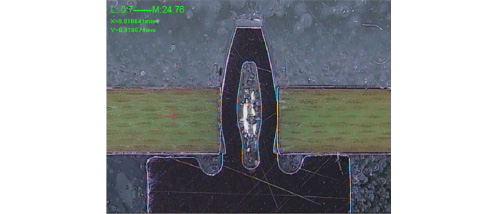
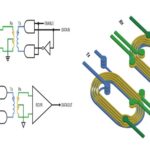
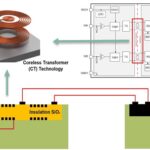

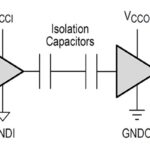
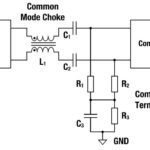

Leave a Reply
You must be logged in to post a comment.